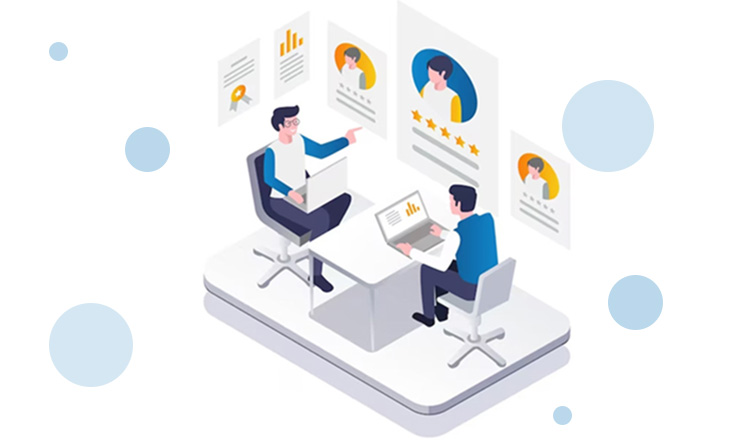
Human Resource Management Software (HRMS)
A Human Resource Management System (HRMS) is a software solution that enables organizations to manage and automate various HR processes and tasks.
Implementing HRMS offers numerous benefits, including increased efficiency, improved data accuracy, streamlined processes, enhanced employee engagement, and better compliance with HR regulations. It empowers HR professionals to focus on strategic initiatives and people-centric tasks while automating routine HR operations.
Key features of HRMS
Users
Departments
Employees
Team Members
Leave
Payroll
Accounts
Holidays
Roles
Reports
CHAT
Events
Benefits of HRMS
-
Employee Information Management
HRMS allows companies to store and manage employee data in a centralized database. It includes personal information, employment history, contact details, performance records, and more. Having a comprehensive employee database streamlines HR processes and facilitates easy access to employee information when needed.
-
Recruitment and Onboarding
HRMS helps streamline the recruitment and onboarding process by automating tasks such as job posting, resume screening, interview scheduling, and candidate selection. It allows HR professionals to track applicants, communicate with candidates, and manage the onboarding process more efficiently.
-
Attendance and Leave Managemen
HRMS automates attendance tracking and leave management processes. It enables employees to clock in and out electronically, tracks attendance records, and manages different types of leave, such as vacation, sick leave, and personal time off. This feature ensures accurate time tracking, reduces errors, and simplifies leave request and approval processes.
-
Payroll and Benefits Administration
HRMS assists in automating payroll processes, including salary calculation, tax deductions, and generating pay slips. It helps HR departments ensure accuracy and compliance with labor laws and regulations. Additionally, HRMS can manage employee benefits, such as insurance, retirement plans, and reimbursements, ensuring efficient administration and tracking.
-
Performance Management
HRMS provides tools for managing employee performance and conducting performance appraisals. It enables the setting of goals, tracking progress, documenting achievements, and conducting performance reviews. This feature helps HR professionals and managers evaluate employee performance, provide feedback, and identify areas for improvement.
-
Training and Development
HRMS facilitates training and development initiatives within organizations. It helps HR departments manage employee training programs, track training completion, and maintain training records. HRMS can also provide tools for employee skill assessment and career development planning.
-
Employee Self-Service
HRMS often includes a self-service portal or mobile app, allowing employees to access and update their personal information, submit leave requests, view pay stubs, and access company policies and documents. This empowers employees and reduces the administrative burden on HR personnel.
-
Reporting and Analytics
HRMS provides robust reporting and analytics capabilities, enabling HR professionals to generate various reports and analyze HR data. This includes employee demographics, turnover rates, training effectiveness, and more. Data-driven insights help HR departments make informed decisions, identify trends, and optimize HR strategies.
-
Compliance and Data Security
HRMS ensures compliance with labor laws and regulations by automating processes and maintaining accurate employee data. It helps HR departments adhere to employment regulations, record-keeping requirements, and data privacy laws. HRMS also implements security measures to protect sensitive employee information and ensure data confidentiality.
-
Integration and Scalability
HRMS can integrate with other systems, such as payroll software, time and attendance systems, and performance management tools, to create a seamless HR ecosystem. Additionally, HRMS is designed to scale as organizations grow, accommodating a larger workforce and expanding HR needs.
Technology
help you grow.











